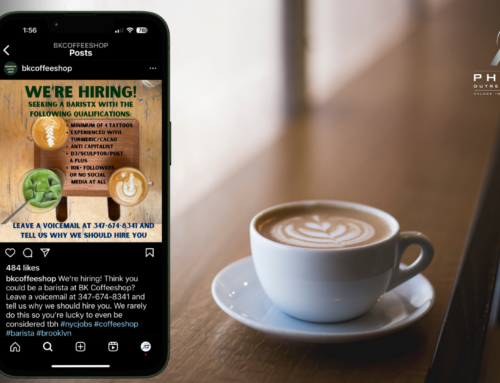In workforce development, the ability to craft a compelling story hinges on understanding exactly who you’re speaking to. Yes, your primary customers are employers, and your product is the workforce. But your actual audience—both digital and in-person—is much broader and more diverse.
From stakeholders who don’t yet know you exist to those waiting for a clear call to action, everyone is looking for something specific from you. The challenge is ensuring your story speaks to them all.
Workforce development boards are more than service providers; they are leaders, conveners, and experts. Whether you’re addressing a room full of stakeholders or interacting with the public online, all eyes are on you to set the tone and bring people together across industries and communities.
Chief elected officials, chambers of commerce, economic development organizations, school districts, higher education institutions, industry leaders, and social service agencies all look to workforce development for leadership, strategy, and solutions.
The question is: how do you effectively communicate with such a wide array of audiences, each with different priorities and interests? The answer lies in one key skill: knowing your audience and telling the right story for the right people.
Here’s how to do it in a strategic, impactful way:
Step 1: Define Your Audiences and Their Needs
The first step to effective storytelling is identifying who you’re talking to and what they need from you. In workforce development, your audience falls into several categories, and each group requires a different approach.
- Employers: These are your primary customers. They need skilled workers who meet their industry-specific demands.
- Example: Share success stories of how your programs matched qualified candidates with employers, emphasizing your ability to deliver customized workforce solutions.
- Chambers of Commerce and Economic Development Organizations: They care about the overall economic health of the region. Your message to them should focus on how workforce development drives economic growth.
- Example: Highlight data showing how the workforce you helped develop increased productivity, created jobs, and spurred economic expansion in the region.
- School Districts and Higher Education Institutions: These stakeholders are invested in preparing the next generation of workers. Your story here is about bridging the gap between education and employment.
- Example: Showcase partnerships where you worked with local schools or colleges to create career pathways, aligning curricula with the skills that industries demand.
- Social Service Agencies: They are concerned with removing barriers to employment for disadvantaged populations. Your story should focus on inclusivity and empowerment.
- Example: Share a story of how your board helped someone overcome significant challenges—like transportation, childcare, or training gaps—to secure a stable, fulfilling job.
- Elected Officials: They want to see their constituents thriving. For them, it’s about results—how your programs are improving lives and communities.
- Example: Present impact reports with metrics that demonstrate how your efforts reduced unemployment or boosted household incomes in their districts.
Step 2: Tailor Your Message for Each Audience
Once you’ve defined your audiences, it’s important to tailor your messaging so that it resonates with their specific needs and concerns. Here’s how you can approach this:
- For Employers: Position your board as a problem-solver that delivers customized workforce solutions. Emphasize your role in understanding the skill sets industries need and in helping them meet their workforce demands quickly and effectively.
- Messaging Tip: “Our workforce programs are designed to solve your toughest hiring challenges by providing qualified talent with the exact skills your business needs to grow.”
- For Economic Development Organizations: Focus on the big-picture benefits of workforce development. Show how your board’s efforts are driving regional prosperity by attracting new businesses, creating jobs, and fostering a competitive workforce.
- Messaging Tip: “Our board has been instrumental in developing the talent pipeline that supports the growth of key industries, ensuring that our region stays competitive in the global market.”
- For School Districts and Higher Education: Highlight your role as a connector between education and employment. Discuss how you align workforce training with educational outcomes to prepare students for high-demand careers.
- Messaging Tip: “We work closely with schools and colleges to build career pathways that give students the skills they need to thrive in today’s workforce, ensuring a smooth transition from classroom to career.”
- For Social Service Agencies: Emphasize your commitment to equity and access. Discuss how you work to remove barriers to employment for marginalized communities, ensuring that everyone has an opportunity to participate in the workforce.
- Messaging Tip: “We’re committed to creating an inclusive workforce by offering resources and support that help individuals from all backgrounds and circumstances succeed in their careers.”
- For Elected Officials: Make the case for community impact. Use data to show how your workforce development programs have contributed to the local economy, improved quality of life, and helped their constituents achieve financial stability.
- Messaging Tip: “Our programs don’t just prepare people for jobs—they transform lives and communities, helping our local economy thrive and our citizens secure lasting employment.”
Step 3: Engage Stakeholders with a Call to Action
Storytelling in workforce development isn’t just about sharing successes—it’s about inspiring action. Once your audience understands who you are and why you matter, the next step is to guide them toward meaningful engagement.
- For Employers: Invite them to participate in workforce initiatives, whether through internships, apprenticeships, or direct hiring partnerships. Provide a clear path for them to get involved.
- Call to Action: “Are you looking for skilled talent to grow your business? Partner with us to find the right workforce solutions for your company.”
- For Economic Development Organizations: Encourage them to collaborate on regional initiatives or help amplify your message. They can be powerful advocates for workforce development.
- Call to Action: “Let’s work together to strengthen our region’s economy by building a talent pipeline that attracts businesses and creates jobs.”
- For Schools and Higher Education: Invite them to co-create career pathways or host joint events that connect students with employers.
- Call to Action: “Help us prepare the next generation of workers by partnering on training programs that align with industry needs.”
- For Social Service Agencies: Encourage collaboration on removing barriers to employment, such as offering support services like childcare or transportation solutions.
- Call to Action: “Together, we can ensure that everyone in our community has access to the resources they need to succeed in the workforce.”
- For Elected Officials: Position your board as a trusted partner in improving the local economy and quality of life. Provide them with data and stories that they can share with constituents.
- Call to Action: “Let’s continue making a difference in our community by investing in workforce development programs that create sustainable careers and economic growth.”
Step 4: Measure and Share Your Impact
To maintain credibility and keep your audience engaged, it’s important to regularly measure and share your impact. Storytelling isn’t a one-time effort—it’s an ongoing conversation. By consistently demonstrating the success of your programs, you reinforce your value and deepen your relationships with stakeholders.
- Example: Share quarterly impact reports that highlight the number of individuals you’ve placed in jobs, the economic value created, and the partnerships you’ve built. Include human-interest stories to put a face on the numbers.
- Impact Message: “In the last quarter, we’ve connected over 200 local residents with high-demand careers, and through our employer partnerships, we’ve helped businesses grow while providing individuals with the skills to succeed.”
Step 5: Be the Leader in the Room
Finally, whenever you’re speaking in person—whether it’s a board meeting or a public forum—remember that you are the expert in workforce development. Eyes are on you because you bring together the stakeholders that matter. Your storytelling needs to reflect your authority and inspire confidence.
- Example: During a community meeting, when stakeholders from different sectors are present, weave together their roles and how each fits into the bigger workforce development picture. Show how collaboration between elected officials, industry leaders, and education institutions has led to tangible results.
- Leadership Message: “Our board has been the driving force behind initiatives that bring together industry, education, and government to create the workforce our region needs to thrive.”
Craft Stories That Inspire and Engage
The key to strategic storytelling in workforce development is knowing your audience and speaking to their specific needs. By tailoring your message, inviting stakeholders to take action, and consistently sharing your impact, you can position yourself as the expert and convener that the community looks to for solutions.
When workforce development boards are in the room, all eyes are on them for a reason: they bring the insights, expertise, and collaborative energy that fuel progress. Make sure your story reflects that.






